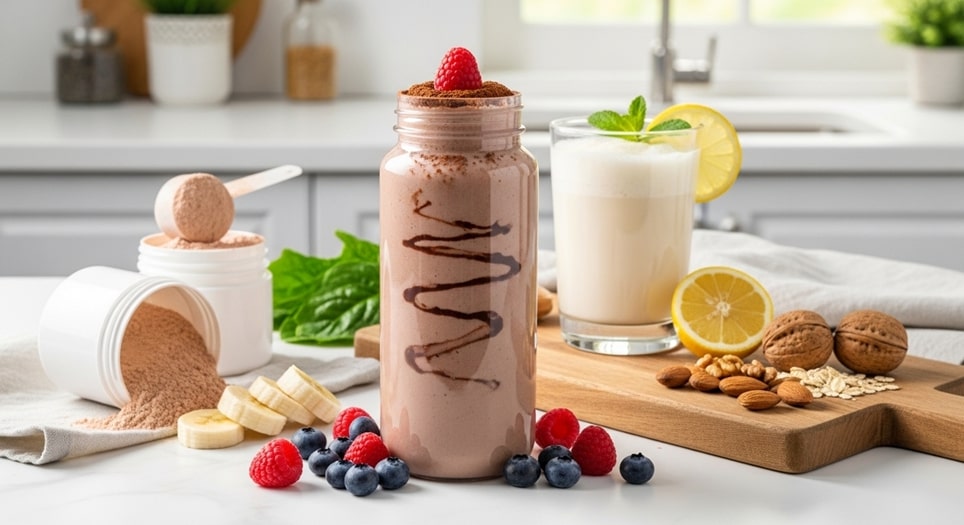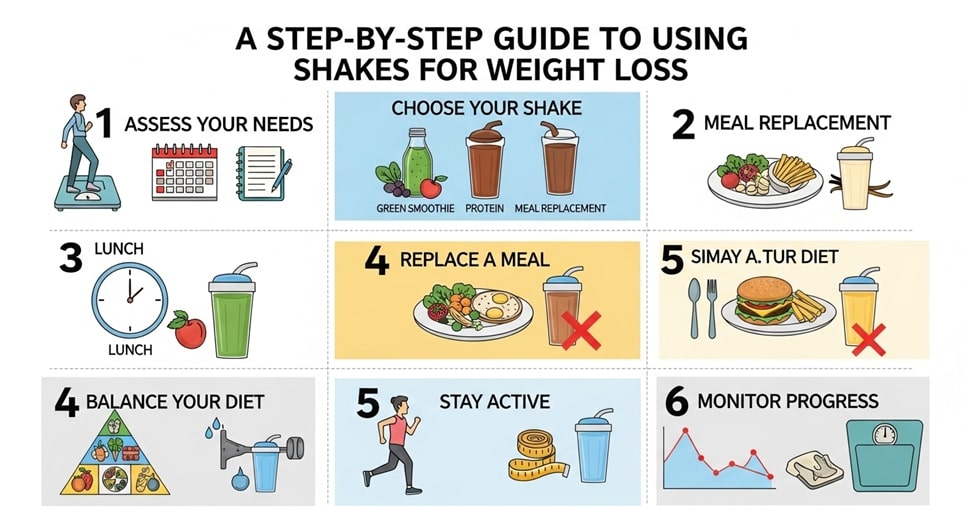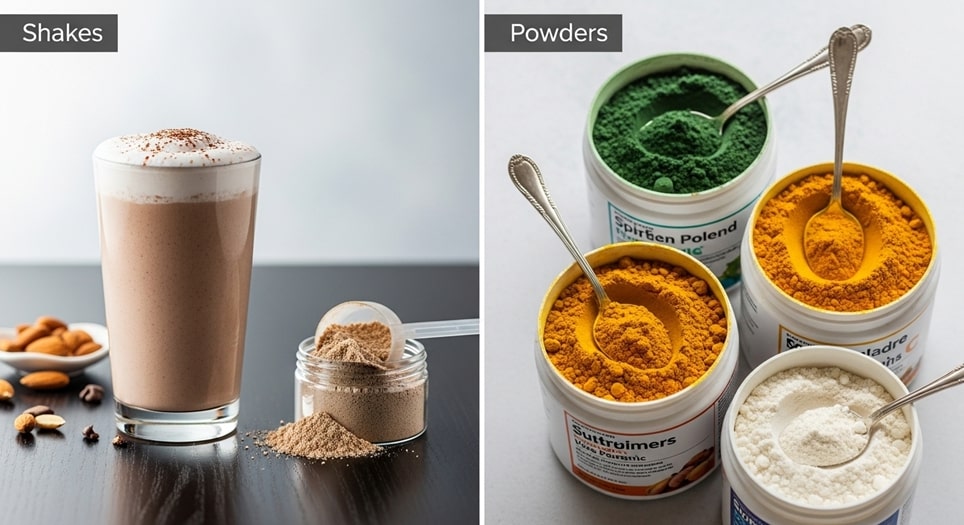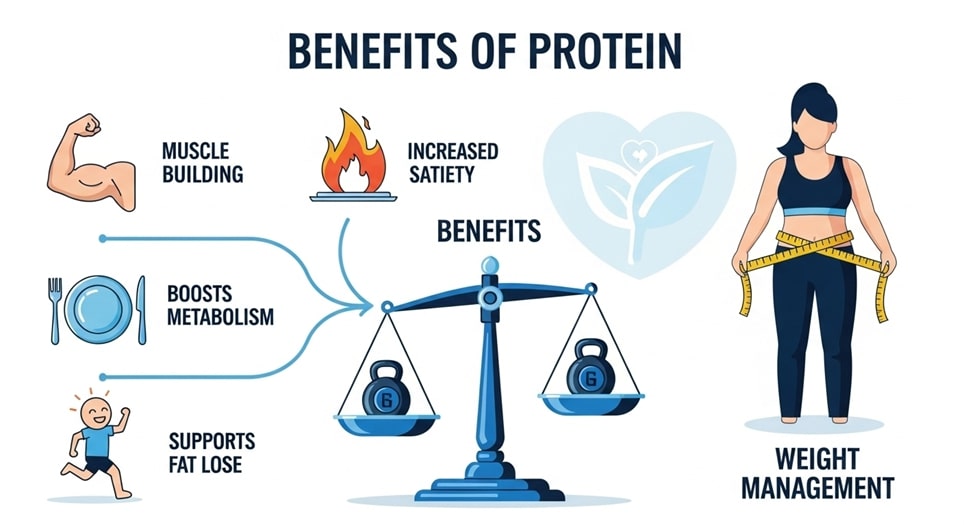
Protein Shakes and Meal Replacements for Weight Loss
In the relentless pursuit of health and fitness, protein shakes and meal replacements have transcended their status as niche products for bodybuilders and athletes. They are now an integral part of modern weight loss strategies, offering a convenient, controlled, and effective way to manage calorie intake while supporting metabolic health. The landscape of these products is constantly evolving, with cutting-edge formulations and innovative ingredients designed to enhance satiety, preserve lean muscle mass, and optimize nutrient absorption.
This comprehensive article delves deep into the world of weight loss shakes, providing a scientifically-backed guide to help you navigate the options and make an informed choice. We’ll explore the fundamental differences, the key ingredients to look for, and a practical, step-by-step approach to incorporating them into your lifestyle for maximum benefit. Understanding the intricate science behind why these shakes work is the first step toward leveraging them for sustainable, long-term success.
The core principle behind using protein and meal replacement shakes for weight loss is their remarkable ability to induce satiety. Protein, among all macronutrients, has the highest thermic effect of food (TEF), meaning the body expends more energy to digest and metabolize it than it does for carbohydrates or fats. This metabolic boost, while seemingly small on a per-serving basis, can add up significantly over time. More importantly, consuming a high-protein shake triggers the release of hormones like GLP-1 and PYY, which signal fullness to the brain, effectively curbing appetite and reducing the likelihood of overeating at subsequent meals. This hormonal response is a critical mechanism that helps individuals adhere to a calorie-restricted diet without feeling constantly hungry, a common pitfall of traditional weight loss plans. The sensation of being full and satisfied is a powerful psychological tool that makes the entire weight loss journey far more manageable and enjoyable.
Beyond appetite suppression, protein shakes play a pivotal role in preserving lean muscle mass during a caloric deficit. When you consume fewer calories than you burn, your body seeks alternative energy sources. Without adequate protein intake, a significant portion of the weight you lose can come from muscle tissue, not just fat. This is a counterproductive outcome, as muscle is metabolically active and helps burn calories even at rest. By providing a concentrated dose of amino acids, protein shakes help to protect and repair muscle fibers, ensuring that the weight you shed is predominantly fat mass. This not only leads to a more toned physique but also maintains a higher basal metabolic rate (BMR), which is crucial for preventing weight regain once your diet ends. The synergy between a controlled calorie intake and muscle preservation is the cornerstone of a successful and lasting body transformation.
Understanding the distinction between a dedicated protein shake and a true meal replacement is paramount for success. While both contain protein, their overall nutritional profiles and intended purposes are vastly different. A protein shake is, as the name suggests, primarily a concentrated source of protein, typically with minimal carbohydrates and fats. It is designed to supplement your protein intake, support muscle recovery after a workout, or act as a high-protein snack between meals. For example, a whey protein shake might contain 25 grams of protein but only 120-150 calories and very little else. In contrast, a meal replacement shake is formulated to be a complete, balanced substitute for a full meal. It contains a calculated balance of protein, carbohydrates, healthy fats, and a comprehensive blend of essential vitamins and minerals, often providing 200-400 calories per serving. Using a protein shake to replace a meal can lead to nutritional deficiencies and a lack of sustained energy, whereas a meal replacement shake provides the comprehensive nutrition needed to fuel your body and keep you full.
The evolution of weight loss shakes has seen a move toward more sophisticated, functional ingredients. Modern formulations often go beyond just protein, incorporating a range of other compounds that support satiety, gut health, and overall well-being. Fiber, for instance, is a critical component increasingly added to both protein and meal replacement shakes. Soluble and insoluble fibers create a gel-like substance in the digestive tract, slowing down digestion and providing a prolonged feeling of fullness. This helps prevent the rapid hunger pangs that can lead to unhealthy snacking. Additionally, many brands are now including digestive enzymes like protease, lipase, and amylase to improve the absorption of the protein and other nutrients, reducing the risk of digestive discomfort often associated with protein powders. These enzymes break down the macronutrients more efficiently, allowing your body to fully utilize the shake’s nutritional content.
When selecting a shake, the source of protein is a critical consideration. The two most common types are whey and casein, both derived from milk. Whey is a fast-digesting protein, meaning it is quickly absorbed by the body, making it an excellent choice for a post-workout shake to rapidly kickstart muscle repair. Casein, on the other hand, is a slow-digesting protein that forms a gel-like mass in the stomach, providing a sustained release of amino acids over several hours. This makes it an ideal option for a pre-sleep shake to support overnight muscle recovery or for a morning meal replacement that keeps you full until lunch. For those with dairy sensitivities or following a vegan diet, the market has exploded with high-quality plant-based options, including pea, brown rice, hemp, and soy protein. Many of these plant-based shakes combine multiple protein sources to create a “complete” amino acid profile, mimicking the nutritional completeness of animal-based proteins.
Choosing the best shake for your needs requires a careful reading of the nutrition label and an understanding of your personal goals. For someone looking to simply boost their protein intake and control appetite between meals, a straightforward whey or plant-based protein powder might be sufficient. However, if the goal is to consistently replace one or two meals a day, a well-formulated meal replacement shake is the superior choice. These products are often fortified with a complete spectrum of vitamins and minerals, ensuring you don’t miss out on essential micronutrients while in a calorie deficit. Always look for shakes with a good protein-to-calorie ratio, low levels of added sugars, and a short, recognizable ingredient list. Avoiding products with artificial sweeteners, fillers, and other questionable additives is a smart strategy for long-term health and digestive comfort. A third-party certification from an organization like NSF or Informed-Sport is a good indicator of a product’s purity and label accuracy.
A Step-by-Step Guide to Using Shakes for Weight Loss
Step 1: Assess Your Needs and Set Your Goals.
Before you even purchase a shake, you must define your objectives. Are you trying to lose a significant amount of weight, or are you simply looking to shed a few pounds? Your goal will dictate whether a simple protein powder or a more robust meal replacement shake is appropriate. For instance, if you are an active individual aiming for a gradual, controlled weight loss while maintaining muscle, a protein shake as a post-workout or snack option is likely all you need. In this scenario, you’d want to focus on a high-quality whey isolate or a complete plant-based protein. The shake serves as a tool to fill nutritional gaps and support recovery, not as a primary dietary staple. It’s about enhancing your current diet, not replacing it entirely.For those with a more ambitious weight loss goal, perhaps looking to replace one or two meals a day, a true meal replacement shake is the smarter choice. These are specifically formulated to provide the balanced nutrition of a whole food meal, ensuring you get enough calories, protein, fiber, and micronutrients to sustain you. Consider your daily schedule and lifestyle. Do you often skip breakfast or lunch due to a lack of time? A convenient, ready-to-drink meal replacement can be a game-changer. Do you have digestive sensitivities? This is the time to research specific ingredients, such as a lactose-free or allergen-friendly shake, to prevent discomfort. By carefully planning and aligning your choice with your personal needs, you set yourself up for success from the very beginning.Finally, it is crucial to consult with a healthcare professional or a registered dietitian before making significant changes to your diet, especially if you have underlying health conditions. They can provide personalized guidance and help you determine the appropriate calorie and protein targets for your body. Remember, these shakes are tools to aid your journey, not a magic bullet. They are most effective when integrated into a holistic plan that includes a balanced diet of whole foods and regular physical activity. Starting with a clear understanding of your body and your goals will prevent common mistakes and lead to more effective, sustainable results.
Step 2: Choose the Right Shake.
The market is saturated with options, making this step feel overwhelming. However, by breaking it down into a few key criteria, the choice becomes much simpler. First, consider the protein source. Whey is a classic, but casein offers a slower release of amino acids, which can be beneficial for appetite control. Plant-based options are excellent for vegans or those with dairy intolerances, but ensure you select a blend (like pea and rice) to get a complete amino acid profile. Next, look at the nutritional content. A good weight loss shake should be high in protein (20-30g per serving) and low in sugar (ideally 5g or less). The presence of dietary fiber (3g or more) is a major plus, as it significantly enhances satiety.Beyond the macronutrients, scrutinize the ingredients list. Aim for products that use natural sweeteners like stevia or monk fruit instead of artificial ones such as sucralose or aspartame, which can sometimes cause digestive issues. The presence of added vitamins and minerals is another indicator of a quality meal replacement shake. Some of the most popular and highly-rated brands right now, such as Huel Black Edition and Ka’Chava, are praised for their comprehensive nutritional profiles and clean ingredients lists. These brands often include superfood blends, probiotics, and digestive enzymes that contribute to overall health and make the shake more than just a source of protein and calories. It’s about getting the most nutritional bang for your buck while on a restrictive diet.The form of the shake is also a consideration. Ready-to-drink bottles are incredibly convenient for people with busy, on-the-go lifestyles, but they often come with a higher price tag and may contain more preservatives. Powders, on the other hand, offer more control over serving size and can be customized with other ingredients like fruits, vegetables, and nut butters for added nutrition and flavor. This flexibility allows you to create a shake that not only meets your dietary needs but also excites your palate, preventing the flavor fatigue that can derail a long-term plan. Remember to cross-reference product claims with third-party certifications to ensure you are getting a clean, high-quality product free from contaminants.
Step 3: Integrate Shakes into Your Daily Routine.
Once you have your shake, the final step is to strategically incorporate it into your diet. For most people, replacing one meal per day with a shake is a sustainable and effective strategy. Many find breakfast to be the easiest meal to replace, as it saves time and ensures a nutrient-dense start to the day. For others, a shake for lunch helps them avoid unhealthy takeout options and keeps them on track during a busy workday. The key is consistency. By replacing the same meal each day, you establish a habit that makes it easier to stay on course. This structured approach helps you manage your total daily calorie intake without the need for constant, meticulous tracking.It is important not to rely solely on shakes. While they are a fantastic tool, they should be part of a balanced diet rich in whole foods. A typical day might look like a shake for breakfast, a balanced lunch consisting of lean protein, vegetables, and complex carbohydrates, and a sensible dinner. This combination ensures you get the benefits of the shakes’ convenience and controlled nutrition while also consuming the fiber, phytonutrients, and other beneficial compounds found in whole foods. Think of the shake as a supplement to your healthy eating habits, not a substitute for all of them. For instance, if you have a shake for breakfast, you could make a nutritious salad with grilled chicken and a variety of vegetables for lunch, and a dinner of baked salmon with roasted sweet potatoes and asparagus.Finally, don’t underestimate the power of customization. Making your shake at home from a powder gives you the opportunity to add ingredients that boost both flavor and nutritional value. For a creamy texture and healthy fats, consider adding a tablespoon of almond butter or a quarter of an avocado. A handful of spinach or kale can add a significant amount of vitamins and minerals without altering the flavor. Berries and bananas provide natural sweetness and a dose of fiber and antioxidants. You can even add spices like cinnamon or nutmeg for a cozy, delicious twist. This level of personalization makes your weight loss journey more enjoyable and more likely to succeed.
Key Ingredients and Their Benefits
The efficacy of a protein or meal replacement shake goes far beyond its protein content. Modern formulations are sophisticated nutritional blends, and understanding the role of each key ingredient can help you make a more informed decision. The most beneficial shakes are those that provide a synergistic combination of components that support not just weight loss, but also overall health. For example, some shakes now include a blend of probiotics and prebiotics. Probiotics are beneficial bacteria that support a healthy gut microbiome, which is increasingly linked to metabolism and weight management. Prebiotics, on the other hand, are a type of fiber that feeds these good bacteria, helping them thrive. A healthy gut can improve digestion and nutrient absorption, making your weight loss efforts more efficient and comfortable.
Another increasingly common and highly beneficial ingredient is medium-chain triglycerides (MCTs). Derived from coconut oil, MCTs are a type of fat that the body can quickly convert into energy. Unlike other fats that are stored, MCTs are immediately used for fuel, which can help boost metabolism and increase feelings of fullness. Some people also report that MCTs provide a mental clarity and energy boost, which is particularly helpful when following a calorie-restricted diet that can sometimes lead to fatigue. Look for shakes that contain a modest amount of healthy fats, such as MCTs or those from flaxseed, to ensure you feel satiated and have sustained energy throughout the day.
In addition to protein, fiber, and healthy fats, a high-quality meal replacement shake will be fortified with a full spectrum of vitamins and minerals. These micronutrients are often overlooked but are essential for hundreds of bodily functions, including metabolism, hormone production, and immune support. When you’re in a calorie deficit, it can be challenging to get all the necessary vitamins and minerals from whole foods alone. A fortified shake acts as an insurance policy, ensuring your body has what it needs to function optimally while you’re losing weight. This is a significant advantage of meal replacements over simple protein powders.
A Practical Comparison of Shakes and Powders
To help you visualize the differences and choose the best product for your specific needs, let’s compare three distinct types of products currently popular on the market. We’ll look at a standard whey protein powder, a plant-based protein blend, and a comprehensive meal replacement shake. This comparison will highlight the unique features of each, allowing you to see how their nutritional profiles align with different weight loss strategies and dietary preferences. It’s not about one being inherently “better” than another, but rather about choosing the right tool for the job. The context of your lifestyle—whether you need a post-workout muscle boost, a quick on-the-go snack, or a full meal substitute—is the most important factor in this decision.
The table below provides a side-by-side analysis of key metrics, including calorie count, protein content, fiber, and primary ingredients. Each entry is explained in a few sentences to give you a clearer picture of what the numbers mean in a real-world application. For example, a low-calorie protein powder is perfect for a pre-workout boost without adding a lot of energy to your daily total, whereas a higher-calorie meal replacement is designed to truly substitute a meal and keep you full for several hours. This data-driven approach allows you to cut through marketing hype and focus on the information that truly matters for your health and weight loss journey.
| Product Type | Typical Calories (per serving) | Typical Protein (per serving) | Key Features & Use Case |
|---|---|---|---|
| Whey Protein Powder | 120-150 kcal | 25-30g | Designed for post-workout muscle recovery or as a high-protein snack. It is quickly digested and absorbed. Low in carbs and fats, making it ideal for adding protein without a lot of extra calories. |
| Plant-Based Protein Blend | 130-160 kcal | 20-25g | A great option for vegans or those with dairy allergies, often a blend of pea, rice, or hemp protein. This type provides a complete amino acid profile and is typically lower in calories. It is perfect for a quick snack. |
| Standard Meal Replacement Shake | 250-400 kcal | 20-30g | Formulated to replace a full meal, it includes a balanced mix of macronutrients and is fortified with vitamins and minerals. It is designed to provide sustained energy and satiety for several hours. This is an excellent option for busy people. |
| Diet-Specific Meal Replacement Shake | 150-250 kcal | 20-25g | A specialized meal replacement, often with a lower calorie count and a specific focus, such as keto-friendly or low-carb. It often contains MCTs for energy and fiber for fullness, fitting into specific dietary protocols. It’s for a very specific use case. |
The rise of plant-based options has been a major trend in the protein powder industry. What was once a niche market with gritty textures and limited flavors is now a powerhouse of innovation. Brands have perfected blends that combine different plant sources to create a complete protein profile, providing all nine essential amino acids necessary for muscle repair and growth. For instance, combining pea protein, which is rich in lysine, with brown rice protein, which is high in methionine, creates a profile that rivals whey. This advancement has opened up effective weight loss and muscle support to a much wider audience, including those with lactose intolerance or those committed to an animal-free diet. The flavor and texture have also improved dramatically, with many plant-based shakes now offering a smooth, delicious experience that was once unthinkable. This evolution has made it easier than ever for anyone to find a shake that fits their lifestyle.
The Broader Benefits of Protein for Weight Management
The role of protein in weight loss extends far beyond the immediate benefits of satiety and muscle preservation. It is a fundamental component of a healthy, sustainable diet that supports long-term metabolic health. Let’s delve into a few key areas where protein intake makes a significant difference, reinforcing why these shakes are a valuable tool in your arsenal. The strategic consumption of protein can help to prevent the dreaded weight loss plateau, a frustrating phase where progress stalls. By keeping your metabolism high and your muscle mass intact, you continue to burn calories efficiently even as your body adapts to a lower intake. This is why a high-protein diet is often more successful in the long run than a low-calorie, low-protein one.
Protein’s effect on hormone regulation is another area of great importance. It helps to regulate hormones like insulin and glucagon, which play a direct role in fat storage and blood sugar control. A diet high in protein can lead to more stable blood sugar levels, preventing the spikes and crashes that lead to cravings for sugary, high-carbohydrate foods. This can be a game-changer for people who struggle with emotional eating or late-night snacking. By providing your body with a steady supply of protein, you empower it to maintain a more balanced metabolic state, reducing the hormonal signals that drive hunger and overconsumption.
The following bullet points highlight several additional benefits of incorporating protein shakes into your weight management plan:
- Enhanced Thermic Effect: As mentioned, protein has a higher thermic effect than carbs or fats, meaning your body burns more calories simply by digesting it. This can lead to a slight but significant increase in your total daily energy expenditure, contributing to a more effective calorie deficit over time. This metabolic boost is a subtle yet powerful advantage that sets protein apart from other macronutrients and makes it so valuable in a weight loss context.
- Improved Satiety and Reduced Cravings: Protein is highly satiating, helping you feel full and satisfied for longer periods. This is not just a psychological effect; it is a physiological one. Consuming a protein-rich shake can help to significantly reduce the urge to snack between meals and can make it easier to adhere to a calorie-controlled diet. It’s a proactive way to manage hunger before it becomes an overwhelming force.
- Muscle Preservation and Toning: Losing weight can often lead to a loss of both fat and muscle. By providing a steady supply of amino acids, protein shakes help preserve metabolically active lean muscle mass. This is crucial for maintaining a strong metabolism and achieving a lean, toned physique, rather than a “skinny fat” appearance. The goal of weight loss should always be to lose fat, and protein helps make sure that happens.
- Nutrient Density and Convenience: Many meal replacement shakes are fortified with a wide range of essential vitamins and minerals, helping to prevent nutritional deficiencies that can occur during a restrictive diet. For busy individuals, a pre-mixed or easily prepared shake can be a lifesaver, ensuring they get a complete, balanced meal even when time is short. This convenience factor is a major reason for their popularity.
- Better Blood Sugar Control: Protein can help stabilize blood sugar levels by slowing down the absorption of carbohydrates. This prevents the sharp spikes and subsequent crashes that can lead to cravings and energy slumps. By keeping your blood sugar in a more stable range, you are better equipped to control your appetite and avoid unhealthy food choices.
- Post-Workout Recovery: Consuming a protein shake after exercise provides the building blocks your muscles need to repair and grow. This is essential for preventing muscle soreness and preparing your body for the next workout. A quick, easily digestible shake is the ideal way to refuel and recover, ensuring your training efforts are not wasted.
Incorporating protein shakes and meal replacements into your weight loss journey can be a game-changer. By understanding the science behind them, making informed choices about the products you use, and integrating them strategically into a balanced lifestyle, you can achieve your goals more efficiently and sustainably. The key is to see them as a powerful tool—not a magic solution—that supports a broader commitment to healthy eating and regular physical activity. Armed with the knowledge in this article, you are well-equipped to navigate the market and find the perfect shake to fuel your success.
There are a multitude of ways to get more protein into your diet, and while shakes are one of the most convenient, they are not the only option. It’s helpful to view protein shakes as a versatile supplement that can be used in a variety of contexts to support your goals. For instance, a shake can be mixed into oatmeal or yogurt to create a high-protein breakfast, or it can be blended with fruits and vegetables for a nutritious smoothie. Some protein powders are even formulated to be used in baking, allowing you to create high-protein pancakes, muffins, or energy bites. The goal is to consistently meet your protein needs throughout the day, and shakes provide a straightforward way to do that.


